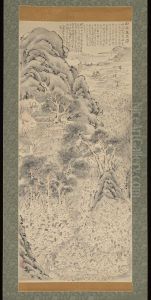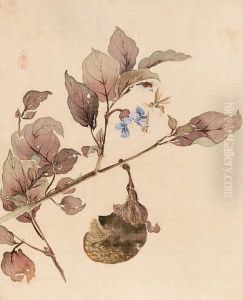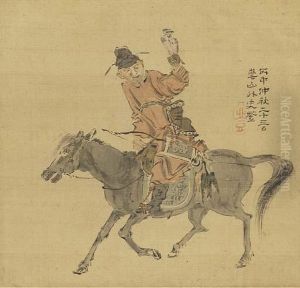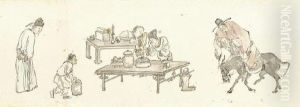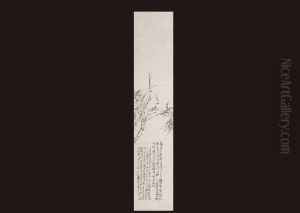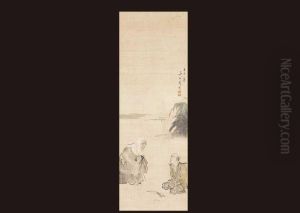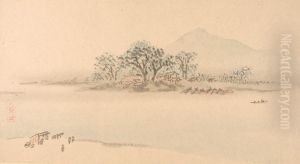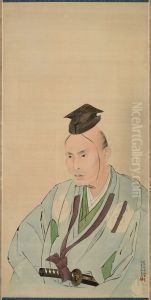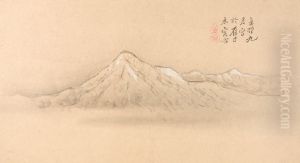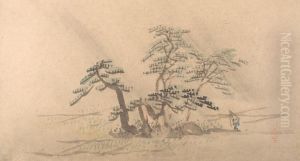Watanabe Kazan Paintings
Watanabe Kazan was a prominent Japanese painter, scholar, and statesman born in 1793 in Edo (modern-day Tokyo), Japan. His life and career were deeply influenced by the political and social changes occurring in Japan during the late Edo period. Kazan was not only a talented artist but also an intellectual who was deeply involved in the study of Western sciences and ideas, a pursuit that was both innovative and risky in the isolationist Japan of his time.
Kazan's artistic work is characterized by its blend of traditional Japanese techniques with influences drawn from Western art, reflecting his interest in Rangaku, or Dutch learning. This was a period when Japan was closed off to most of the world under sakoku policies, but maintained limited trade and informational exchange with the Dutch, allowing some Western knowledge to trickle into the country. Kazan was particularly adept at incorporating these Western perspectives into his landscapes and portraits, creating a unique style that set his work apart from his contemporaries.
Despite his contributions to art and scholarship, Kazan's life was marked by political turmoil. His liberal views and advocacy for opening Japan to the outside world led to his arrest and house arrest, dramatically impacting his career and personal life. In 1839, he was implicated in a scandal involving members of the Mito domain who were sympathetic to his reformist ideas. As punishment, he was placed under house arrest, where he remained until his death in 1841.
During his confinement, Kazan continued to produce art, including poignant self-portraits that reflect his introspection and melancholy over his political downfall. His legacy is complex, as he is remembered not only for his artistic genius but also for his tragic end and the visionary ideas that ultimately led to his persecution. Today, Watanabe Kazan is celebrated as a figure who bridged traditional Japanese and Western art forms, and as a symbol of the intellectual and cultural ferment of late Edo Japan that would eventually lead to the country's modernization in the Meiji era.

